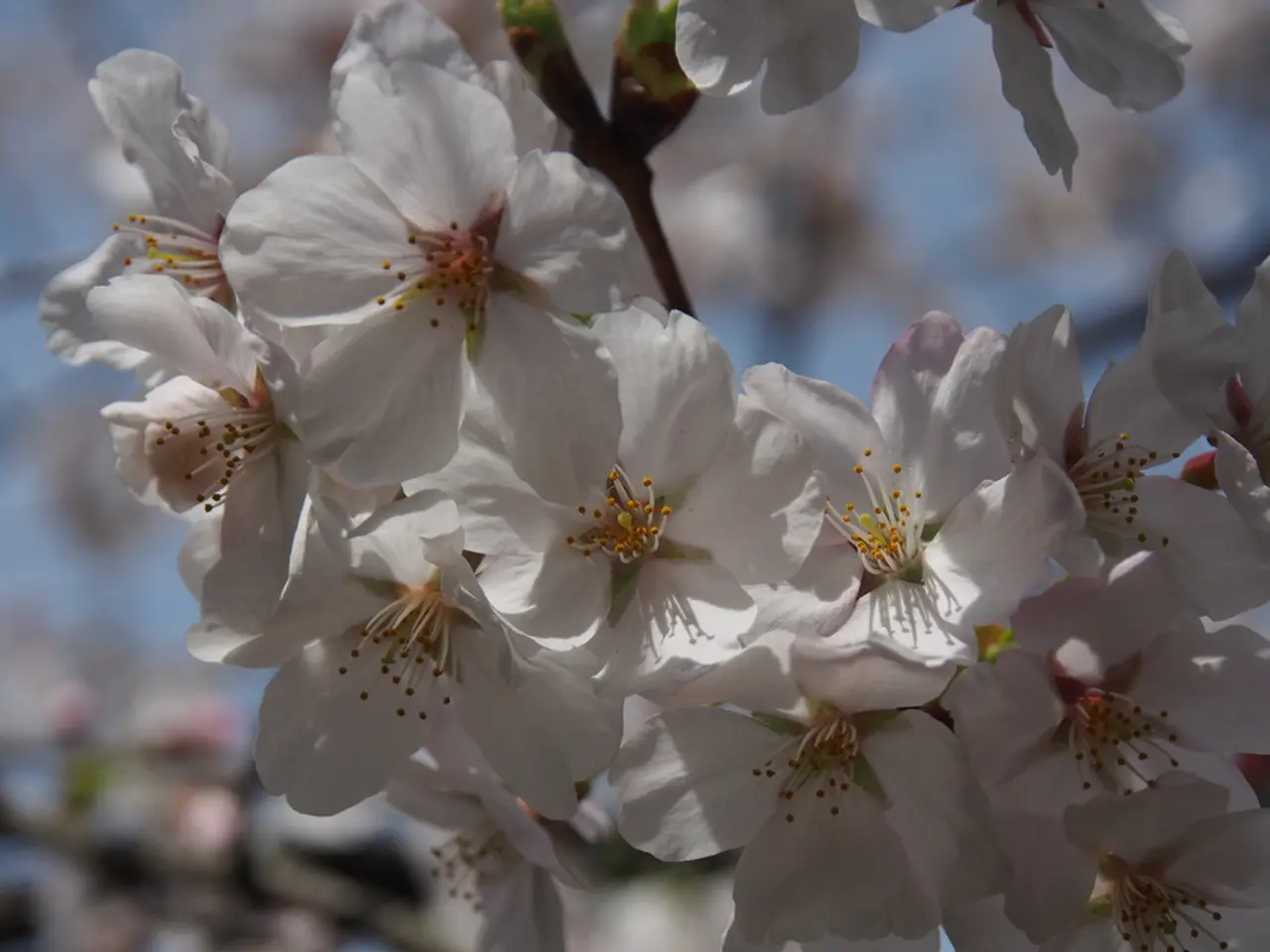Flowering Wonders: A Look into the Past and Present of Cherry Blossoms
In the rich tapestry of Japanese culture, the cherry blossom (Sakura) holds a unique and poignant place, particularly in the context of warfare. The symbolic association of cherry blossoms with the transience and beauty of life resonated deeply with the samurai and, later, the Japanese military during World War II.
The cherry blossom's cultural importance in Japan began to take shape during the Heian Period (794-1191), when nobles appreciated their beauty and incorporated them into poetry, music, and imperial celebrations such as hanami (flower viewing). As emperors planted sakura around their properties, the blossoms became a symbol of imperial power.
During the feudal period (1185-1868), the fleeting nature of cherry blossoms' life span came to symbolize the shortness and beauty of samurai lives. This metaphor was later extended during World War II, when cherry blossoms adorned the planes of kamikaze pilots who undertook suicide missions. The pilots were idealized as “beautiful falling cherry petals for the emperor,” linking the natural imagery of blossoms gently falling to their sacrifice and transient lives.
However, it's important to note that the use of cherry blossoms in Japanese warfare culture was less about physical use in warfare and more about a deep cultural symbol representing ephemeral life, sacrifice, and loyalty to the emperor. After WWII, this militaristic association faded, and cherry blossoms became more strongly linked to themes like renewal and the Buddhist concept of impermanence.
Despite their historical association with warfare, there is no evidence that cherry blossoms were used as tools or weapons beyond this symbolic role. The cultural war-time use was expressed mainly through decoration and metaphor rather than direct combat.
Cherry blossoms are the national flower of Japan and have a long and storied history. From the Muromachi Period, when the Sato-zakura Group made its first appearance, to the Nara Period, where the start of the flower viewing custom was with ume (Japanese Plum) trees, the cherry blossom has been a common topic in Japanese media, including poetry, art, manga, anime, and films.
Today, the National Cherry Blossom Festival is held in Washington D.C. from March 20th to April 14th every year, celebrating the gift of cherry blossoms from Japan to the United States in 1912. Hanami, the centuries-old practice of holding feasts or parties under blooming sakura trees, continues to be a cherished tradition in Japan.
In modern Japan, the cherry blossom continues to symbolize the ephemerality of life, but it is no longer tied to the military or imperialism. Instead, it stands as a reminder of the beauty and transience of life, a symbol of renewal and the Buddhist concept of impermanence.
References:
[1] Kawamura, M. (2010). Cherry Blossoms: The History, Culture, and Art of Sakura. Tuttle Publishing.
The cherry blossom's cultural impact in Japan extends beyond imperial power and warfare, touchingly weaving its way into various aspects of Japanese life. Its symbolism evolved to represent the fleeting nature of samurai lives during the feudal period, a metaphor later employed during World War II to idealize kamikaze pilots, associated with the implicit poignance of their sacrifice.
Today, cherry blossoms stand out in the realm of news, whether it be publications or stories, showcasing their profound importance in Japanese culture. From the pages of historical texts to the vibrant hues of fashion-and-beauty campaigns, the cherry blossom serves as an enduring muse that captures the imagination of designers and creators alike.
In the realms of food-and-drink, cherry blossom flavors have become a staple in Japan, with an array of delicacies and beverages available for enthusiasts to indulge in. As a significant component of home-and-garden landscapes, cherry blossoms offer a tranquil slice of nature, inviting peace and tranquility into daily life.
Cherry blossoms have also ventured beyond Japanese shores, gracing cities like Washington D.C. during the National Cherry Blossom Festival. Their global popularity demonstrates the universality of their symbolism, resonating with individuals and cultures outside of Japan in the realm of education-and-self-development.
Travelers flock to Japan during the blooming season, seeking an immersive and transformative journey through the beautiful sakura scenery. Along the way, they find themselves informed and enlightened about the culture, history, and lifestyle that have shaped this enchanting flower into a symbol embodied by elegance, transience, and renewal.





